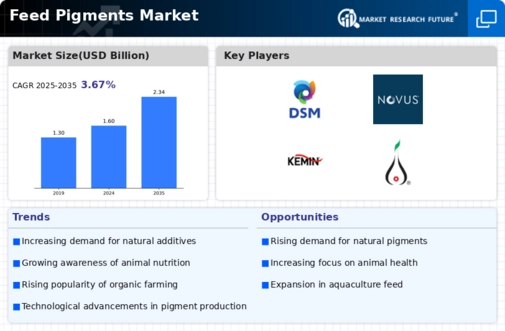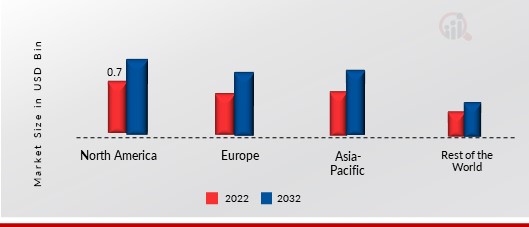Leading market players are investing heavily in research and development in order to expand their product lines, which will help the Feed Pigments market grow even more. Market participants are also undertaking a variety of strategic activities to expand their footprint, with important market developments including new product launches, contractual agreements, mergers and acquisitions, higher investments, and collaboration with other organizations. To expand and survive in a more competitive and rising market climate, Feed Pigments Industry must offer cost-effective items.
Manufacturing locally to minimize operational costs is one of the key business tactics used by manufacturers in the Feed Pigments Industry to benefit clients and increase the market sector. In recent years, the Feed Pigments Industry has offered some of the most significant advantages to medicine. Major players in the Feed Pigments market, including BASF SE, Royal DSM N.V., Novus International Inc., Nutrex NV, Kemin Industries Inc., Behn Meyer Group, Synthite Industries Ltd, and Kalsec Inc., are attempting to increase market demand by investing in research and development operations.
DSM-Firmenich AG (DSM-Firmenich) is a science-based company that focuses on identifying environmental and social challenges and opportunities, seizing those opportunities to have a lasting positive impact on people and the environment, and then concentrating on fostering growth through sustained, profitable growth. The business makes speciality plastics, fibre and resin solutions, nutritional lipids, carotenoids, vitamins, and other components. From agriculture byproducts and biochemicals, the company creates materials for renewable energy and medicinal devices. The company's operations are tightly synchronised with those of its clients to promote the quick development of significant science-based inventions.
Eastern Europe, Latin America, North America, Asia Pacific, and other regions are all where the corporation has activities. The headquarters of DSM-Firmenich are located in Heerlen, Limburg, the Netherlands. DSM purchased Prodap, a significant provider of animal nutrition and technology, in September 2022. With this approach, the business combines technology solutions, consultancy services, and specialised nutritional products to increase the effectiveness and sustainability of animal production.
Kemin Industries Inc. (Kemin) produces and distributes substances linked to human nutrition and animal health. Its product line includes, among other things, enzymes, probiotics, carotenoids, natural extracts, mould inhibitors, forage preservatives, toxin binders, liquid antibacterial formulations, and antioxidant formulations. These goods are used in a variety of sectors, such as biofuels, personal care, commercial greenhouses, pet food technology, rendering, dietary ingredients, food technologies, and animal nutrition and health. Several nations in North America, South America, Europe, the Middle East, Africa, China, Russia, India, and Asia Pacific are served by Kemin.
The corporation has manufacturing sites in South Africa, the United States, China, India, Singapore, Brazil, and Brazil. Des Moines, Iowa, in the US, is home to Kemin's headquarters. In order to provide the highest-quality services and specialised solutions to Kemin Animal Nutrition, Kemin Industries launched additional offices and a distribution centre in Mexico in May 2022.
















Leave a Comment